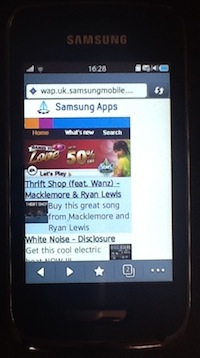
Doesn’t take long to browse the Bada store.
Bada is Samsung’s in-house operating system for low cost smartphones, but its days might be numbered. Tizen 2.0 has been released to developers, with a consumer version likely to be available on phones in the fall.
This Linux-based, open source operating system is also backed by Samsung, along with other major technology players. And that’s the key difference. The burden is distributed across many companies and individual developers who, for one reason or another, invest their time in developing Tizen source code and writing apps to run on it.
Samsung employees at CES in Las Vegas last month were openly speculating that Bada would be phased out in favor of Tizen. Two big benefits: Tizen holds the promise of a much bigger ecosystem of apps and services, and it could scale up to become a viable competitor – technically and in the market place – to Android.
There’s nothing particularly wrong with Bada. I’ve been using it for about six months. My Wave Y phone can handle basics like making calls, surfing the web on the built in Dolphin browser and reading email. But there’s not much variety in the Bada section of Samsung’s app store. It’s also geographically restricted. Samsung doesn’t officially sell Bada handsets in the U.S., although unlocked grey market phones can be found at mainstream retailers like Walmart, which is where I bought mine.
Low cost phones are grabbing the early headlines from Barcelona as Mobile World Congress opens. Open source OSes are a natural match. Swapping Bada for Tizen is the right move for Samsung.
